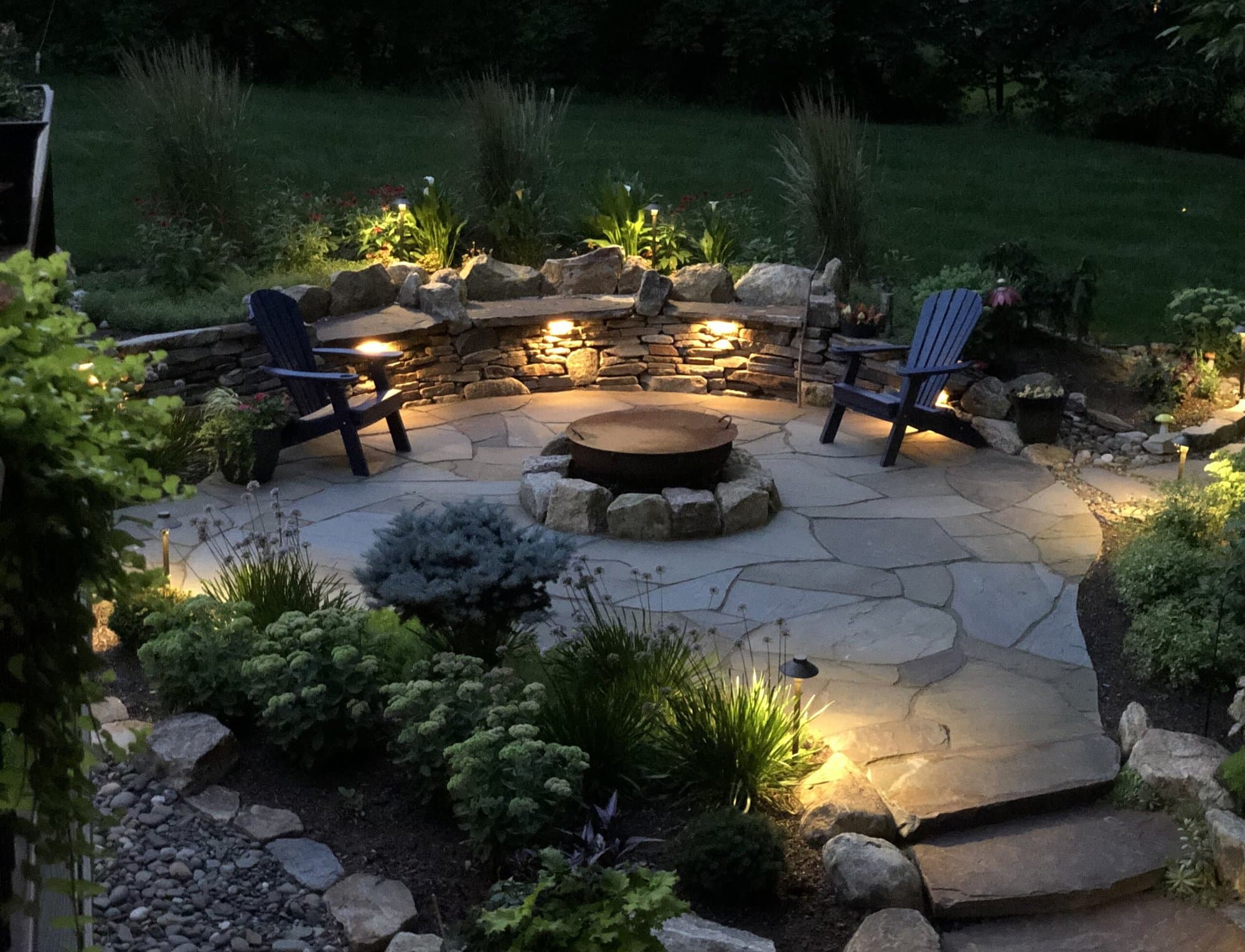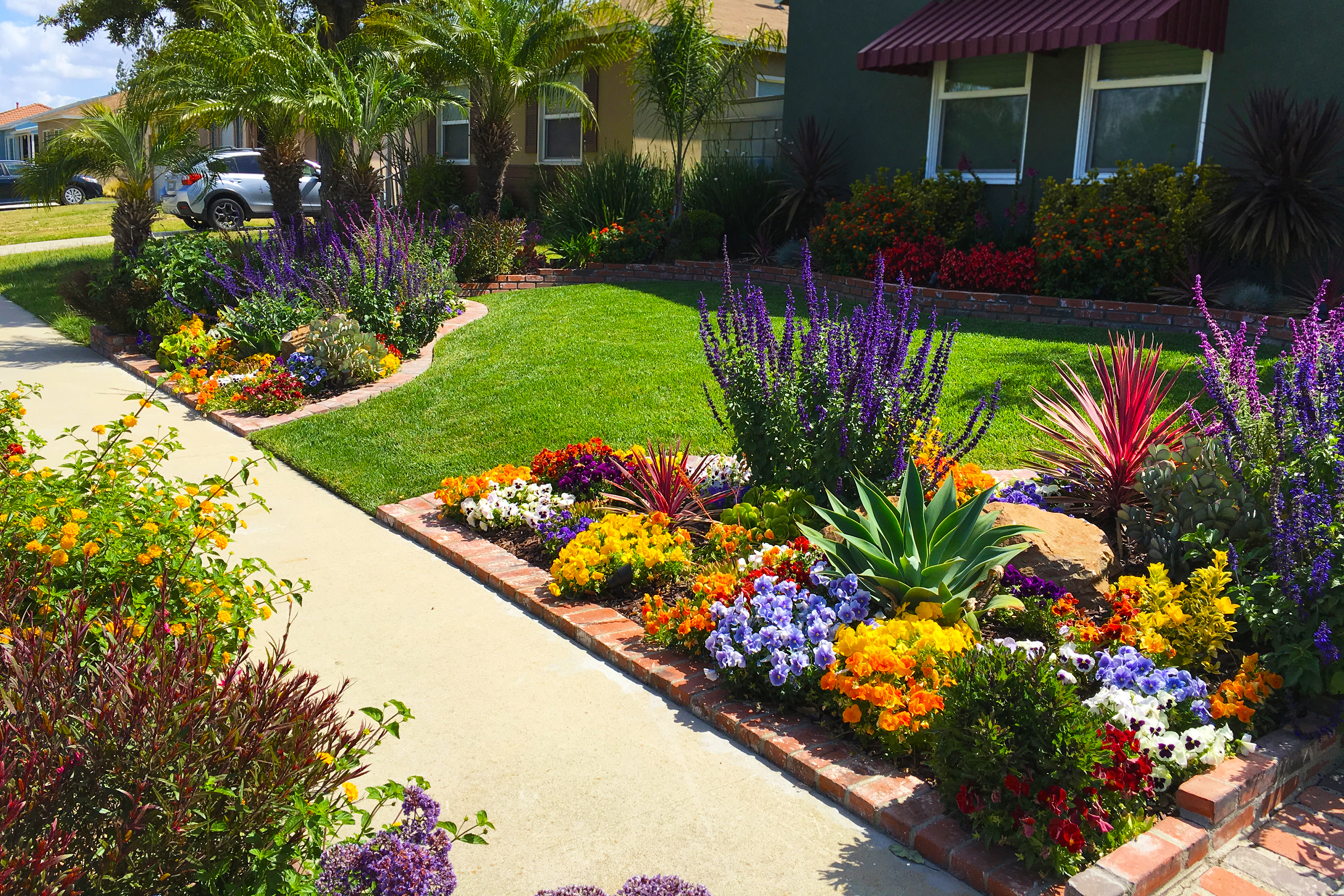The Best Guide to Keeping Your Lawn with Palm Desert Landscaping
A Comprehensive Overview to Creating and Implementing Effective Landscaping Solutions
The art and scientific research of landscaping expand beyond simple appearances; they involve a thoughtful assimilation of design principles, ecological stewardship, and practical application. What strategies can one employ to make certain these landscapes not only prosper but likewise grow in harmony with their surroundings?

Understanding Landscape Layout Concepts
One might wonder what fundamental aspects contribute to reliable landscape style. At its core, successful landscape style rests on numerous essential concepts that direct the setup and choice of components within a room. These concepts include unity, equilibrium, proportion, and rhythm, each offering to create an unified outdoor setting.
Unity refers to the natural relationship among various elements, ensuring that they collaborate visually and functionally. Equilibrium can be achieved with asymmetrical or symmetrical setups, enabling the landscape to feel secure and welcoming. Percentage entails comprehending the range of elements in connection with each various other and the surrounding environment, promoting visual consistency and convenience.

Evaluating Your Outdoor Area
Prior to applying the concepts of landscape layout, an extensive assessment of your outside space is important. This initial analysis aids define the extent of your landscape design project and makes certain that your style lines up with the special characteristics of your property. Begin by evaluating the dimensions of your area, taking exact dimensions to recognize the readily available location for numerous components such as patio areas, yards, and paths.
Next, observe the existing attributes of your landscape, consisting of topography, dirt quality, and drainage patterns. These factors considerably influence plant selection and positioning. In addition, examine the sunlight exposure across various locations throughout the day, as this will affect the types of plants that thrive in your yard.
Take into consideration the microclimates developed by frameworks, trees, and other obstacles, as they can influence temperature level and wetness levels. Take note of any existing plants or hardscape components that you want to eliminate or retain. This thorough assessment lays the foundation for a knowledgeable and effective landscaping solution, making certain that your style is not just visually pleasing but sustainable and additionally practical for several years to find.
Lasting Landscaping Strategies
Integrating lasting landscaping strategies is important for developing an eco responsible outdoor room. These techniques not only advertise ecological balance but additionally enhance the practical and visual worth of a landscape. One fundamental method is the application of native plants, which call for less water and maintenance while sustaining local wildlife. Applying efficient watering systems, such as drip watering, reduces water waste and makes certain that plants receive appropriate dampness.

Another reliable strategy is the critical placement of trees and shrubs to provide natural windbreaks and shade, therefore decreasing energy expenses (Palm Desert Landscaping). Rainfall yards can be incorporated right into the landscape design to take care of stormwater runoff properly, filtering pollutants prior to they get in rivers
Picking the Right Plants
Choosing the right plants for your landscape is critical to achieving both visual charm and environmental consistency. The procedure starts with an understanding of your neighborhood environment, dirt conditions, and the specific microenvironments within your landscape. Evaluating aspects such as sunshine direct exposure, dampness degrees, and existing vegetations will certainly aid you pick plants that grow in your one-of-a-kind setup.
Take into consideration incorporating indigenous plants, as they are well-adapted to neighborhood problems, call for much less upkeep, and support local wildlife. Additionally, selecting a varied selection of varieties can boost biodiversity while minimizing the threat of disease and pest episodes. It is necessary to review the growth practices, blooming durations, and useful reference seasonal shades of prospective plants to create a cohesive and vibrant landscape.
Moreover, consider the planned usage of the area; for instance, if the location will certainly experience high foot web traffic, choose resistant ground covers. By attentively choosing plants that straighten with both your visual goals and environmental demands, you can create a lasting landscape that not only enhances your residential or commercial property yet likewise contributes favorably to the surrounding ecosystem.

Implementation and Maintenance Methods
When the best plants have been chosen for your landscape, the focus shifts to effective implementation and recurring maintenance approaches. Effective setup begins with proper website prep work, which consists of soil testing to establish nutrient degrees and pH, complied with by amending the dirt as required. Carefully set up plants according to their development behaviors and light needs, ensuring adequate spacing to promote healthy growth.
Watering is a vital aspect of application. Develop a watering routine that thinks about the certain demands of each plant types, changing for seasonal modifications. Using drip irrigation systems can enhance water efficiency and reduce runoff.
Maintenance approaches have to be applied to guarantee the longevity and vitality of your landscape. Routine tasks consist of weeding, mulching, and pruning to regulate development and stop illness. Fertilization should be conducted based upon important site dirt tests, supplying the essential nutrients without over-fertilizing.
Monitoring for illness and insects is vital; early detection can protect against substantial damage. Seasonal changes to maintenance regimens, such as preparing and winterizing perennials for spring development, will make certain that your landscape continues to be healthy and aesthetically appealing year-round.
Final Thought
Successful application and recurring upkeep further ensure the durability and vitality of landscapes. By integrating these aspects, landscapes can be changed into gorgeous, practical atmospheres that advertise biodiversity and add favorably to area health.
One could question what fundamental components add to reliable landscape layout. At its core, effective landscape layout pivots on numerous vital concepts that lead the setup and option of components within a room.Picking the right plants for your landscape is our website critical to attaining both aesthetic allure and eco-friendly consistency. It is vital to examine the development behaviors, growing durations, and seasonal colors of potential plants to create a vibrant and cohesive landscape.
Once the right plants have actually been picked for your landscape, the focus shifts to effective implementation and continuous maintenance strategies.